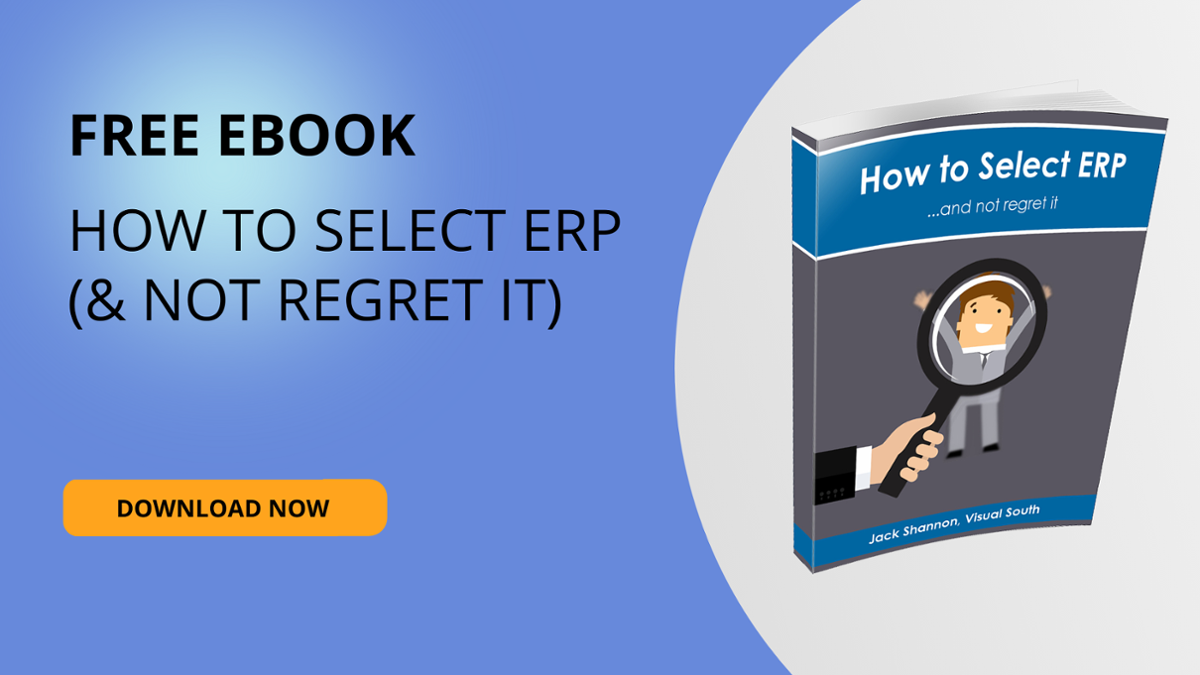QuickBooks & manufacturing have inherent problems
QuickBooks is an accounting-focused application that’s built for small businesses. Offering a lot of great features, it is one of the most commonly used accounting programs for all types of small companies. However, it is not an enterprise resource planning (ERP) system. There’s some improved functionality available with QuickBooks Enterprise, but companies tend to outgrow that functionality quickly—especially work-order-driven manufacturers. We have seen many companies struggle when trying to determine how to use QuickBooks for manufacturing.
Why? QuickBooks lacks some industry-specific functionality that’s critical for rapidly growing manufacturers. A key area of focus where the application falls short in meeting manufacturing requirements is with master data management.
Related: Is QuickBooks an ERP Software?
Master Data Management
Engineering
Creating and managing bills of materials for manufacturing requires significant specialized functionality. The features needed include the ability to quickly and easily generate not only the bill of materials, but the associated manufacturing routing. QuickBooks does not offer this functionality, but ERP software does.
With manufacturing-specific ERP applications, the methods of handling bills of materials are built in. For example, you’ll have the ability to:
- Search similar products and copy from existing quotes, engineering masters, and work orders, and then make simple changes
- Import directly from Excel into the ERP system
- Push the bill of materials from CAD applications to the manufacturing-specific ERPs using specialized solutions such as CADLink
Configuration
Companies with complex pricing, series, features, and options often require a product configurator. This tool is specific to ERP systems and is not offered by QuickBooks. The product configurator allows end users, dealers, salespeople, and engineers to quickly and accurately make selections through the configurator to generate a pictorial representation of the product, pricing, bill of material, routing, and specifications. For more information about how a product configurator can help improve your engineering processes as well as drive sales, please check out CPQ.
Engineering Change Control
Another important function for manufacturers that QuickBooks lacks is having revision control for bills of materials, as well as the ability to make changes to documents, work orders, and quotes. Establishing a controlled and documented process is a must for manufacturers that have grown and now have multiple revisions to their products.
Being able to quickly and easily see what product version customers have is very helpful for customer service and engineering. Knowing what specific components and processes were used is critical for diagnosing issues and providing replacement parts for service and part sales.
Other abilities needed include “where used” functionality for a part, in order to see what finished goods will be affected with changes in the engineering master. This function is a major time saver for engineering.
Finally, you won’t be able to see an audit trail of changes unless you have a fully functional engineering change module. ERP software provides a complete history of approvals and the associated workflows, whereas QuickBooks does not. This is critical for companies that fall under stringent quality control requirements, such as ISO-certified or -compliant companies.
Lot and Serial Trace
A common requirement of many manufacturers is to have cradle-to-grave traceability for all components that go into their manufactured products. This means tracing the component from arrival at the facility through production, to any outside process, back through incoming receipt, issue back to work order, and to the end user. Again, this is functionality not offered by QuickBooks for manufacturing online.
Lot and serial trace in ERP systems can be executed for individual serialized component parts and for material lots used in production or sold as pass-through products. Almost all manufacturers that supply their products to industries such as aerospace, medical devices, and food and beverage need the ability to properly document which specific products were used for finished goods in the event of a recall or failure analysis.
Document Management
Document management is critical for proper master data management. QuickBooks and some lower-tier ERP applications have the ability to use OLE (Object Linking and Embedding), but they are simply pointing to documents outside their systems, which only provides the user with the ability to view that document.
A strong document management platform offers the ability to check documents in and out, make revision control changes, and use engineering change control to manage the changes. The better platforms allow you to see the documents on both shop floor management and mobile device applications.
Summary
Manufacturing companies that use QuickBooks typically have to make a decision about how to address their manufacturing requirements as they grow. The addition of Excel, homegrown workarounds, non-integrated processes, and manual interfaces to QuickBooks tends to create mistakes and be labor intensive. This is why many companies begin evaluating ERP systems and end up transitioning to a manufacturing-focused ERP.
Related: Are You Ready to Move On From QuickBooks or Peachtree?
If you’re struggling to make QuickBooks and manufacturing requirements fit, please feel free to reach out for a free assessment. You can also learn about evaluating ERP software options on your own with our popular eBook for selecting ERP software.








